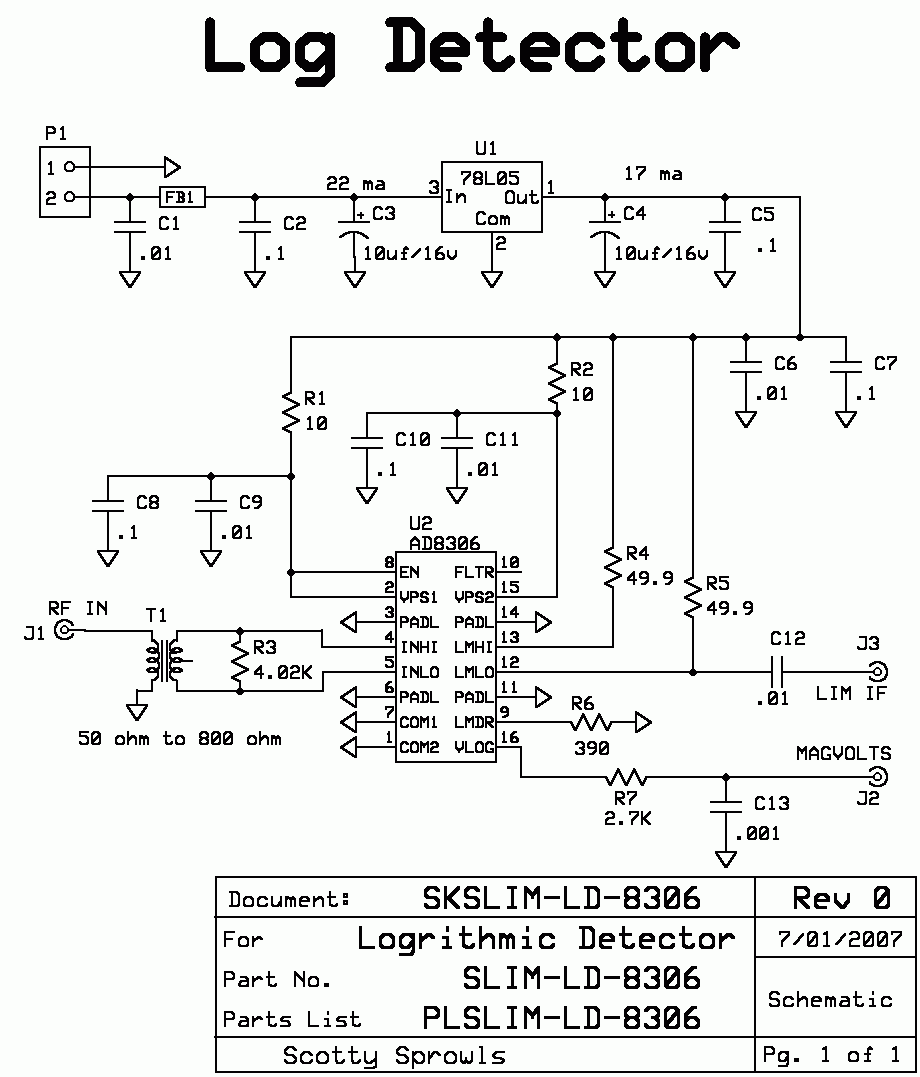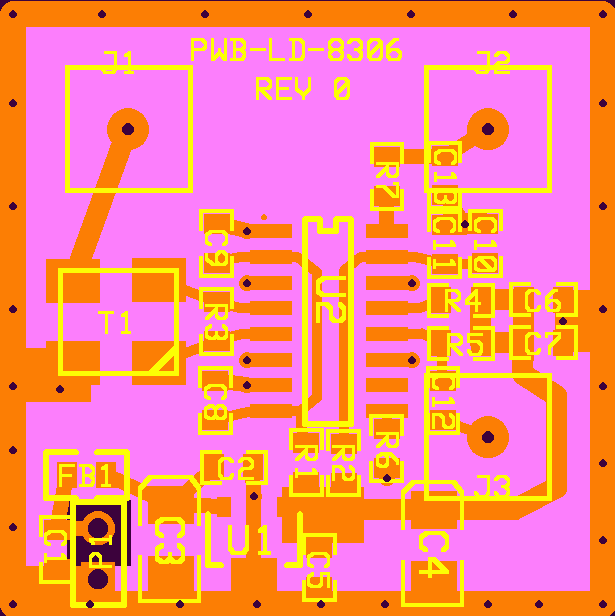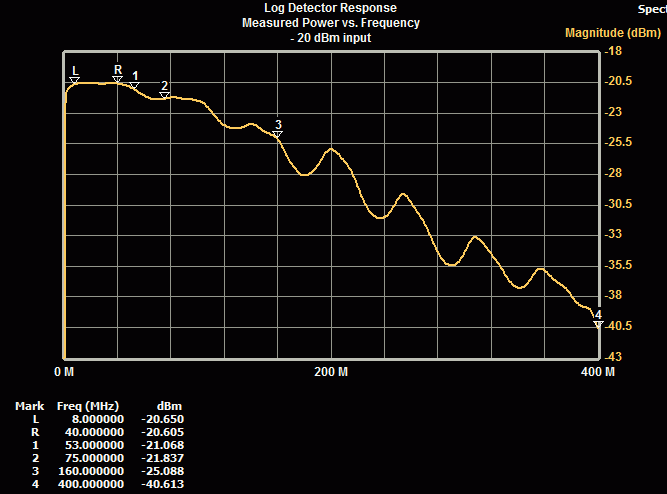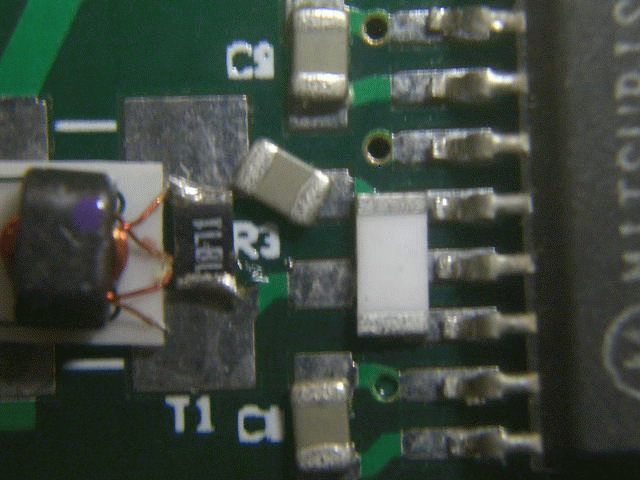SLIM-LD-8306
Logarithmic Detector
Updated
8-05-09 Added information on experimental
modification.
Updated
4-5-15 Add Log Det Response Plot
Updated
5-18-15 Change filter capacitors, Change Parts
List to Rev A and move to this page.
Updated
12-26-15 No real changes, just some clean-up.
SLIM-LD-8306,
Log Detector, size-A
Use your mouse's "right click" and "Save Link" to download
the current versions:
a. SKSLIM-LD-8306.sch
Rev 0,
Schematic, in ExpressPCB software.
b. PWB-LD-8306.pcb
Rev 0,
Base artwork for PWB, in ExpressPCB software.
Use this drawing to order the pwb from Express, or use as
Layout to locate
the parts on the Board.
c. PLSLIM-LD-8306 Rev A, Parts List,
maintained on this page, only.
The SLIM-LD-8306 Log Detector has a dual
function. It is used as a logarithmic detector to convert RF
power to DC
voltage (RSSI). And, it is used as a high gain, RF limited
amplifier. The module has an input impedance of 50 ohms (J1)
and a bandwidth
of 3 MHz to 160 MHz.
The logarithmic
dynamic
range is -90 dBm to +10 dBm, with a DC output of +0.4 volts to +2.4
volts, on J2, "MAGVOLTS". The module will respond to inputs above
+10 dBm and below -90 dBm, but the output will not be logarithmic.
The Limited I.F.
Output (J3) is a 50 ohm source with 50 mv peak to peak, square wave
output, with a duty cycle of 50/50.
The limiter input dynamic range is from -77 dBm to +10 dBm.
It should be noted that this module is
extremely sensitive to outside noise influence. It is important
that this module be totally shielded with a perimeter fence and a
cover.
SK-PWB-LD-8306, Schematic
of SLIM-LD-8306,
Log Detector



